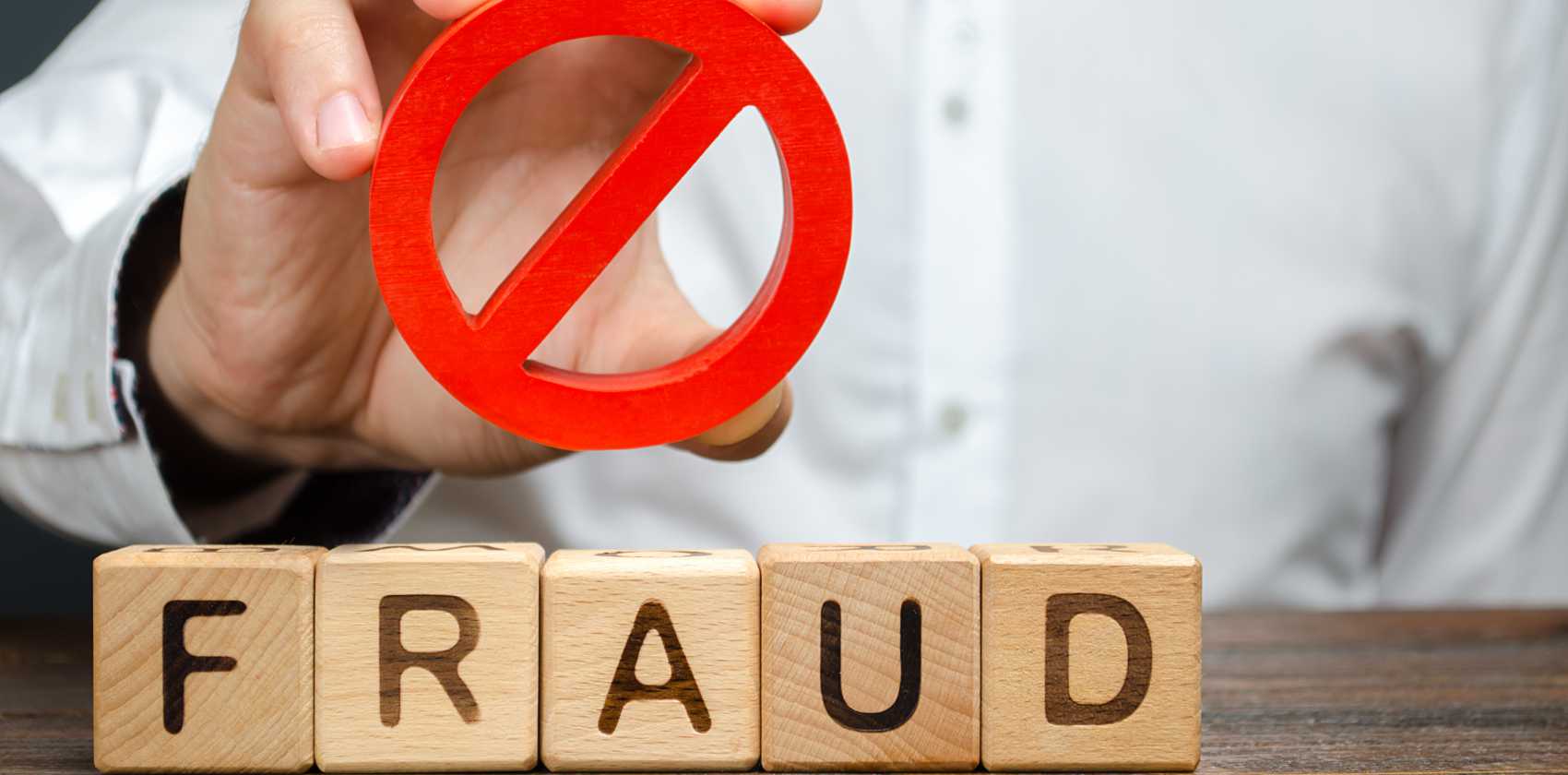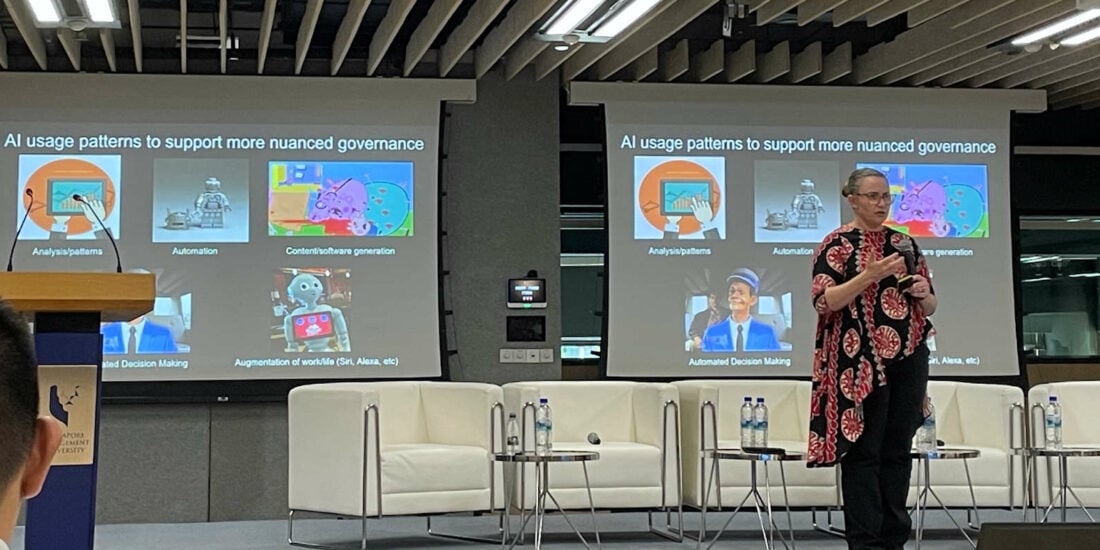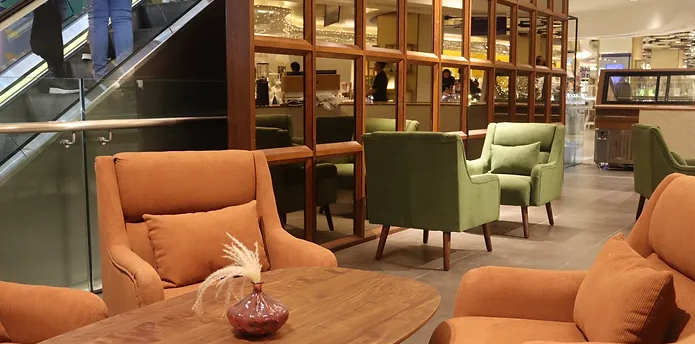
Forensic Science in the Detection and Investigation of Fraud
Commercial, Intellectual Property and Insurance Fraud
Introduction
Forensic science is a vast field, encompassing diverse disciplines that support a wide scope of investigative and legal applications. The use of forensic analysis may not be the first thing that springs to mind when legal practitioners are working on their cases. Some may believe that forensic evidence is useful only in criminal cases while the awareness of others may extend to only the better-known forensic disciplines such as fingerprints, DNA and digital forensics. Granted, forensic evidence such as DNA, illicit drugs, firearms and bloodstain patterns may be more relevant to criminal cases, but other domains such as digital forensics, fingerprints, questioned documents, trace evidence, unknown chemicals and materials, damage evidence, and traffic accident and industrial incident reconstructions are equally applicable to civil suits involving cheating and fraud.
In this article, we highlight how forensic science can be applied to detect and investigate commercial, intellectual property and insurance fraud, providing objective physical evidence to support or refute a claim. The types and forms of fraud are varied and have evolved with time, as fraudsters constantly seek creative ways to pull off their scams and conceal their tracks. The nature of fraud is that it works outside our field of view and can go undetected for long periods. Some of the world’s biggest scandals remained undiscovered for years. On the other side of the fence, forensic scientists are constantly seeking new approaches and tools to stay ahead of fraudsters, in a relentless effort to detect and expose their illegal tactics and schemes. However, forensic scientists can perform this critical role only if brought into the inquiry, and given the evidence to examine.
Fraud cases span all socio-economic sectors and involve diverse requests pertaining to the forensic examination of disputed documents1Forensic Document Examination – A Primer for Lawyers, Law Gazette, March 2015 to determine their authenticity, chemical analysis2Unknown Chemicals and Materials – A Primer for Lawyers, Law Gazette, March 2016 of counterfeit products and items related to infringement of intellectual property, and investigation and reconstruction3Forensic Reconstruction – A Primer for Lawyers, Law Gazette, May 2015 of accident scenes to verify claims of personal injury and property damage. The case studies shared in this article illustrate the wide range of forensic disciplines that have been employed to provide scientific evidence of fraud.
1. Fabricated and Fraudulent Documents
The consequences of fraud to a company can be wide-ranging; fraud may involve sums of money that a small company can ill afford to lose or alleged activities that could land the company in hot soup with the authorities. For dispute resolution cases involving fraudulent documents, Forensic Document Examination can be vital as it answers questions as to whether the signatures on a document were forged or whether a disputed document has been tampered with, backdated or had a page(s) replaced.
Cases we have encountered include:
- Employment fraud where the employer fabricated an employment contract to include terms and conditions that were unfavourable to the employee.
- Instances of embezzlement where the employee misappropriated company funds by fabricating payment vouchers that were addressed to himself using cut-and-paste manipulation.
- A case of over-billing where the contractor backdated numerous invoices and work orders and billed a developer of a construction project for work that was not carried out, and for equipment that was not delivered.
- An insurance case where among the policies bought by the applicant, one bore a signature that was not signed by the applicant.
- A fraudulent claim for GST rebates where fraudulent documents were submitted to the Inland Revenue Authority of Singapore for falsified purchases.
- Fabricated or altered medical certificates and fraudulent claims where the clinic claimed government subsidies and grants for medical procedures that were not performed.
a. Determining the Authorship of Signatures and Handwriting
In many instances, the Plaintiff or Defendant would request for the determination of authorship of their signature or another party’s signature because they suspect that it had been used to make fraudulent claims and receive payments. Attempts to forge signatures usually occur in three ways: freehand simulation, tracing and signature manipulation. Forensic document experts compare the signatures on the disputed documents with undisputed specimen signatures from a known source to determine authorship of the questioned signatures.
Case Study 1: Authorship of signatures
In a dispute involving three parties, the supplier sued the purchaser and their middleman for the non-payment of amounts due. In their past business dealings, the sale of goods to the purchaser and receipt of payment by the supplier would go through the middleman. The supplier, however, claimed that the middleman had provided him with a new Agreement allegedly signed by the purchaser. Based on the new terms, the purchaser would pay the supplier directly, instead of their usual arrangement. The supplier subsequently shipped the goods but failed to receive any payment. Meanwhile, the middleman was uncontactable. When confronted with the said Agreement, the purchaser claimed that he was unaware of the new arrangement and did not sign such a document. TFEG experts examined the signatures on the Agreement and found that the disputed signatures were not signed by the purchaser. Both the purchaser and supplier were likely the victims of a fraudulent Agreement.
b. Determining Authenticity of Documents
Apart from verifying the authorship of disputed signatures, the overarching scope of forensic document examination encompasses all aspects of authenticity such as the authenticity of company stamp impressions, purported dates of documents, as well as the presence of any anomalies, irregularities and inconsistencies in the document, which are tell-tale signs and evidence of alteration, substitution and fabrication.
Typical questions asked at the enquiry stage of such cases include:
- Whether a signature was physically signed in ink
- Whether the document was tampered after it was signed
- Whether the document was recently created and backdated
Here are two case studies: one involves fraud within the company, and the other involves two companies, where the authenticity of many documents was called into question. The forensic evidence in each of these cases was instrumental in validating the case theory put forth by the lawyer and assisted the Court and arbitrator in the legal proceedings.
Case study 2: Cut-and-paste manipulation
In a case involving misappropriation of company funds, the client (Plaintiff) had initially wanted to rely mainly on forensic accounting to provide evidence of fraud but subsequently decided to use TFEG’s forensic findings to establish the validity of the legal claim. The forensic report and expert testimony provided convincing scientific evidence that the company payment vouchers issued to the Defendant were fabricated. These findings helped refute the Defendant’s claim that he had witnessed the Plaintiff sign the payment vouchers, and assisted the Court in establishing the Defendant’s acts of forgery.
Case study 3: Fabricating and backdating of documents
A legal dispute arose when the main contractor for a residential condominium project terminated the contract with the developer before completing the project. The contractor (Claimant) produced numerous invoices and documents that dated back to the time of the project, claiming that the developer (Respondent) did not pay for the work done. However, the developer rejected claims of the authenticity of these documents and requested for the disputed documents to be examined by forensic experts.
We found irregularities and inconsistencies in the signatories and the handwritten dates vis-a-vis the printed dates on the document. The forensic findings provided evidence that the invoices had been backdated and multiple persons (the signatories) were involved in fabricating them. The expert report revealed the modus operandi of the fabrication process, uncovering strong evidence that supported the Respondent’s claim that the documents given by the Claimant were fraudulent.
2. Infringement of Intellectual Property and Counterfeit Products
Intellectual property (IP) fraud has become increasingly globalised and organised. It is commonly associated with organised crime and is exacerbated by multiple supply chain players in different countries and online sales. IP refers to property that is protected under copyright, trademark, patent or trade secret laws. In some cases, it involves one party illegally obtaining access to proprietary material or information belonging to the other party.
Intellectual property can be found everywhere in our midst. IP infringement cases may be related to a wide variety of products, ranging from high-end branded consumer products such as handbags, expensive medication and health supplements to mass-produced commodities such as clothing, books and music. The compact disc (CD) was the object of widespread piracy in the 1990s; today, software piracy remains a menace to copyright. Many potential products also face mounting challenges from skilled counterfeiters attracted by the quick, easy money and high profit margins.
Counterfeits are a grave concern, especially when they infiltrate the conventional legitimate supply chain or pose public health or safety risks. When an alleged counterfeit product is a potential public health threat, the relevant health and enforcement authorities would immediately step in to investigate and verify the product’s authenticity and provenance, seize the illegal product, halt the activities of the counterfeiters, and cripple the criminal syndicates. Besides addressing concerns on product safety, the legitimate manufacturers of the authentic products would also investigate and attempt to trace the source of the counterfeits in order to protect their brand reputation, intellectual property, market share and profits.
Fully aware that poor knock-offs can be spotted from a mile away, counterfeiters have invested heavily in technology and equipment to manufacture products that may escape even the sharpest eye. Forensic scientists therefore require an array of scientific techniques to establish the authenticity of a product, especially in detecting high-quality counterfeits. Forensic analysis is useful in providing investigative leads to link suspicious products from different markets and trace them to a common source and the illegal supply chain. It can also play a vital role in triggering a recall of the counterfeit products to safeguard public health.
Physical and Chemical Analysis of Counterfeits and IP Infringement Items
Adopting a forensic approach has proven effective in “singling” out counterfeit products and items suspected of patent infringement through the examination of both the physical features and chemical composition of the product in question. This holistic framework investigates the authenticity of the packaging material, as well as the contents, and is particularly useful in cases where the outer packaging is authentic, but the contents are counterfeited and vice versa.
For example, in cases involving counterfeit medicine,4Forensic Science – Briefs for the Legal Practitioner by The Forensic Experts Group, LexisNexis 2017.,5Yong Yuk Lin, A. Plancon, Lau Yen Hui, D. M. Hostetler, F. M. Fernandez, D. G. Green, S. Sounvoravong, S. Nara, M. Boravann, T. Dumrong, N. Bangsawan, V.V. Tuc, Low Min Yong, Lim Chin Chin, R.L. Ai, P. Newton ‘Collaborative Health and Enforcement Operations on the Quality of Antimalarials and Antibiotics in Southeast Asia’ American Journal of Tropical Medicine & Hygiene (April 2015).,6Detection of Counterfeit drugs-Singapore’s Approach, (2012) Lim Chin Chin, Yong Yuk Lin, Lau Yen Hui, Yeo Wee Chuan, Institute of Medicine meeting, US Academy of Sciences, 11 Mar 2012, Washington DC, USA.,7Chemical fingerprinting of counterfeit drugs (2008), Lim Chin Chin, Lim Thiam Bon, Yang Chiew Yung, Michael Tay Ming Kiong, Permanent Forum on International Pharmaceutical Crime Conference, PFIPC, Singapore, 2-4 June 2008. traditional testing laboratories typically examine the amount of active pharmaceutical ingredients (API) present in the medicine. However, unlike in the past where counterfeits were found with very little or no API, counterfeiters today are adding APIs to ensure efficacy, cultivate customer loyalty, and increase levels of repeat business. Hence, the presence of APIs, even in the right amounts, does not imply that a product is authentic.
Case study 4: Counterfeit cosmetic product
TFEG was engaged by a manufacturer of skincare products to analyse one of their top sellers, which was suspected to be counterfeited. The suspected product was being sold online and appeared visually similar to the authentic sample. Physical examination of the bottle and its label revealed subtle differences between the questioned and authentic samples, which were likely to be unnoticed by the untrained eye of a consumer. On the other hand, the chemical composition of the contents of the questioned sample was found to be significantly different from that of the authentic samples.
Case study 5: IP infringement
A manufacturer suspected his former partner of manufacturing and selling competitor products that were made with his proprietary formulation. The manufacturer approached TFEG to analyse and compare the chemical composition of several products to provide evidence of patent infringement. The case was urgent as court proceedings were ongoing and a forensic report was required within a very short period of time. Besides completing the required analysis by the manufacturer within the stipulated timeframe, our experts advised the client that more specific and complementary scientific tests should be conducted to strengthen the conclusions in the expert report. The results from the chemical analyses provided strong objective evidence to support the manufacturer’s claim of patent infringement.
Case study 68Public Prosecutor v Koh Peng Kiat and another appeal (2014) 4 SLR 703: Counterfeit medical device
In 2011, a contact lens manufacturer Ciba Vision was alerted to the sales of suspected counterfeits when it received stocks of a particular model of its coloured contact lenses for exchange from several legitimate retail optical shops in Singapore. A female who had worn the contact lenses purchased from one of the retail outlets was suspected to have suffered from adverse reactions after using the product. Forensic findings on the seized contact lenses established that they were counterfeits.
Forensic examinations revealed that although the packaging of the suspected products bore close resemblance to the authentic products, their printing differed and typographical errors were observed on the suspected products. The colour pigments which were supposed to be on the external surface of the authentic contact lenses were found on the internal surface of the suspected products, indicating that they would be in direct contact with the wearer’s eye. The chemical composition of the suspected products differed from those of the authentic contact lenses, and were of poor quality and deemed unsafe for consumer use. It was the first case of counterfeit contact lenses being sold by optical shops in Singapore.
3. Fraudulent Insurance Claims
Fraudulent claims account for a significant portion of claims received by government authorities and financial institutions, costing world economies trillions of dollars annually. Insurance fraud results in losses to insurance companies and higher premiums for law-abiding policy holders. They may be pulled off by persons directly connected to a policy, such as the policy holder (applicant) and their beneficiaries, or the agents and brokers themselves.
Some of the cases involving insurance fraud relate to personal injury and property damage claims. Forensic analysis has proven to be a vital tool in detecting and identifying fraudulent activities where employers and/or workers may have provided falsified information about the actual incident. Types of cases encountered include:
- A workplace safety incident where the worker claimed for head injury due to objects that had fallen from a height when he was entering the warehouse to retrieve some materials requested by his supervisor.
- A workplace safety incident where the employer alleged that the worker had deliberately cut his hand with a pneumatic rotary abrasive grinder while using it to scrape paint off a surface.
- A slip and fall accident where a worker claimed that he fell from a height of several metres to the ground while standing and working on a stack of concrete slabs.
- A case of a disputed statement where the signature on the recorded statement of an injured worker describing the incident came into question.
- A traffic collision case where the insurer alleged that the extent of damage on the vehicle was inflated and falsified by the repair workshop.
- A property insurance case where it was alleged that the business owner set fire to maliciously burn his warehouse and goods.
a. Self-inflicted Injury
In workplace incidents, cases have been encountered where the company asserts that their worker had intentionally injured himself for liability claims. For such cases, forensic experts conduct scene visits and examine the damage and transfer evidence on items associated with the incident. Some cases may also require conducting bloodstain patterns analysis, chemical analysis and simulation experiments.
Case study 7: Workplace safety incident
A construction worker claimed compensation after suffering a deep cut on his hand while using a rotary cutter. According to the worker, he was holding the portable power tool with both hands; his right hand in front of his left hand. While he was operating it, the rotating blade on the power tool suddenly jerked backwards. His right hand lost its grip on the tool, and the blade cut his gloved left thumb. Our forensic experts examined the location of the incident which had been cordoned off and preserved by the company’s safety coordinator shortly after the incident occurred. Scene photographs, photographs showing the worker’s injury, medical reports and evidence on the damaged glove and at the incident site were also examined, and simulation experiments were carried out at the site. The forensic findings were inconsistent with the worker’s statements and version of the events that occurred.
b. Falsified Property Damage
Besides claims of personal injury, property damage is another area where fraudulent claims may arise. Forensic examination of the damage evidence on vehicles or the analysis of unknown liquids and materials at a fire and explosion scene can help the insurer assess the validity of the claim.
Case study 8: Vehicle damage
In a case of insurance fraud, two sets of photographs depicting a damaged vehicle were submitted for comparison. One set of photographs was taken shortly after the traffic incident at the scene while the second set was taken at the repair workshop. Our forensic expert observed notable differences in the extent of damage on the car; the car in the repair workshop appeared to have sustained more damage than at the scene.
Conclusion
Commercial, intellectual property and insurance fraud cause heavy economic losses to organisations, insurers and individuals. Not surprisingly, opposing parties present conflicting claims and statements. In this dispute of facts, it is one person’s word against another’s unless objective evidence is presented. As for counterfeit cosmetics, medicines and health products, the consumer is not only cheated but potentially harmed healthwise. Fake products so closely resemble authentic ones that counterfeiters are able to quietly palm them off as authentic in the supply chain. For businesses to reap the full benefits of invention and innovation, proprietary information and products must be protected against theft and fraud.
Before appropriate enforcement and legal action can be taken, the truth needs to be first established. IP infringement products need to be detected and identified. Objective evidence must be gathered to prove that documents, claims and statements are spurious, fraudulent or fabricated. Law enforcement, legal practitioners and aggrieved parties can turn to forensic science to provide evidence to support or refute a claim. The forensic scientist has a wide range of forensic techniques to objectively examine, compare or verify the physical evidence, documents and statements or claims.
Fraud is here to stay, and perpetrators are better at covering their tracks and ever bolder and more adventurous in pulling off new scams. Combating fraud requires the concerted and coordinated efforts of the manufacturer or company, legal practitioners, trained investigators, and multi-disciplinary experts from forensic accounting, forensic science, engineering and other disciplines. It is beneficial for the lawyer not only to gather and preserve scientific evidence, but also to work closely with the forensic expert from the early stages of an investigation. By understanding the context of the case and sieving through the information and items, the forensic expert will be able to home in on the relevant and most promising areas to target, provide scientific advice on the forensic tests and analyses required to establish evidence of fraud, and possibly reconstruct the modus operandi of the fraudster.
Endnotes
| ↑1 | Forensic Document Examination – A Primer for Lawyers, Law Gazette, March 2015 |
|---|---|
| ↑2 | Unknown Chemicals and Materials – A Primer for Lawyers, Law Gazette, March 2016 |
| ↑3 | Forensic Reconstruction – A Primer for Lawyers, Law Gazette, May 2015 |
| ↑4 | Forensic Science – Briefs for the Legal Practitioner by The Forensic Experts Group, LexisNexis 2017. |
| ↑5 | Yong Yuk Lin, A. Plancon, Lau Yen Hui, D. M. Hostetler, F. M. Fernandez, D. G. Green, S. Sounvoravong, S. Nara, M. Boravann, T. Dumrong, N. Bangsawan, V.V. Tuc, Low Min Yong, Lim Chin Chin, R.L. Ai, P. Newton ‘Collaborative Health and Enforcement Operations on the Quality of Antimalarials and Antibiotics in Southeast Asia’ American Journal of Tropical Medicine & Hygiene (April 2015). |
| ↑6 | Detection of Counterfeit drugs-Singapore’s Approach, (2012) Lim Chin Chin, Yong Yuk Lin, Lau Yen Hui, Yeo Wee Chuan, Institute of Medicine meeting, US Academy of Sciences, 11 Mar 2012, Washington DC, USA. |
| ↑7 | Chemical fingerprinting of counterfeit drugs (2008), Lim Chin Chin, Lim Thiam Bon, Yang Chiew Yung, Michael Tay Ming Kiong, Permanent Forum on International Pharmaceutical Crime Conference, PFIPC, Singapore, 2-4 June 2008. |
| ↑8 | Public Prosecutor v Koh Peng Kiat and another appeal (2014) 4 SLR 703 |






